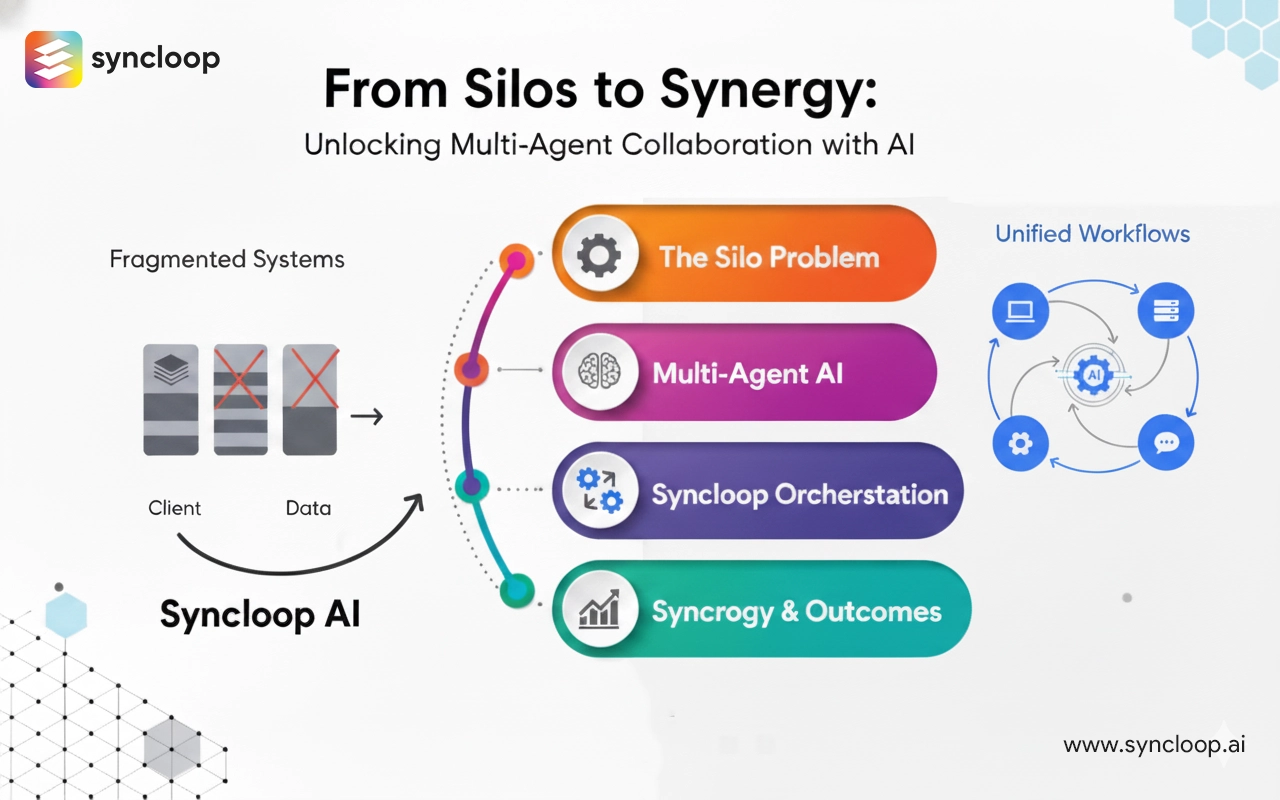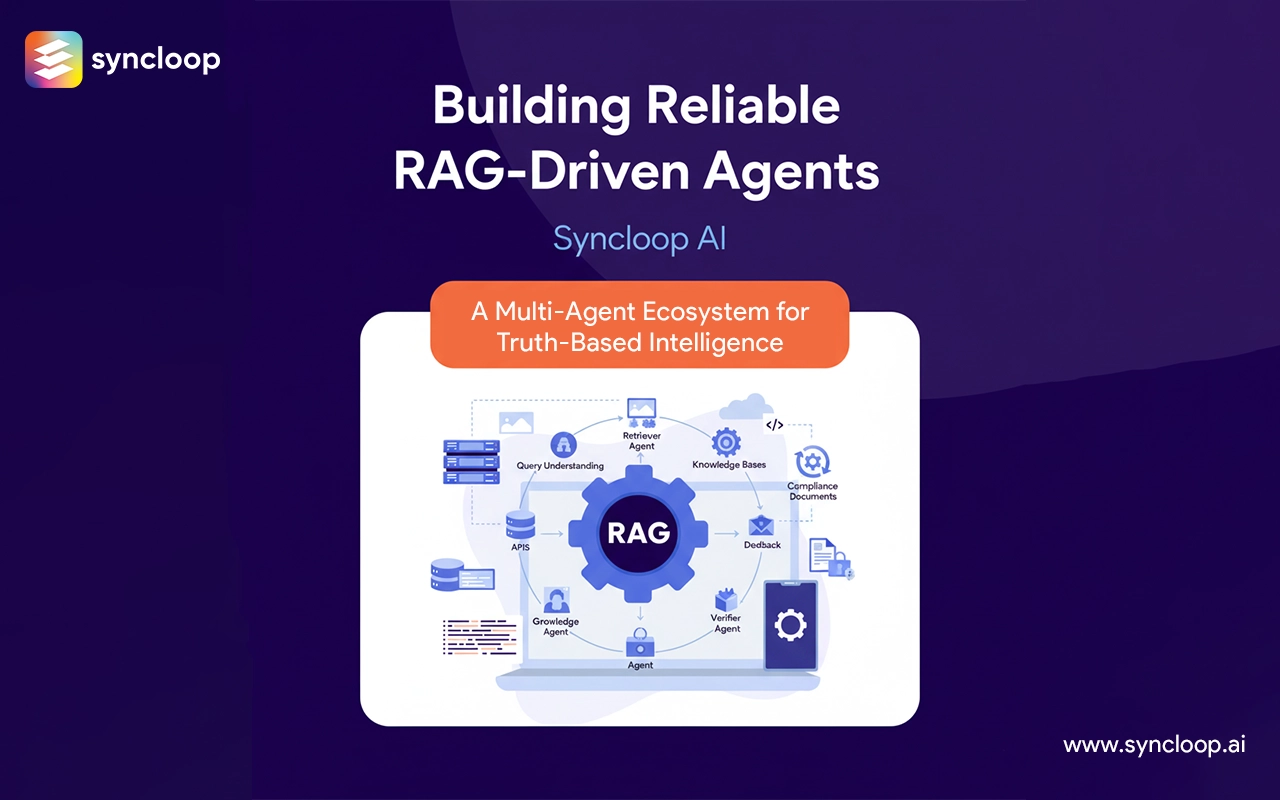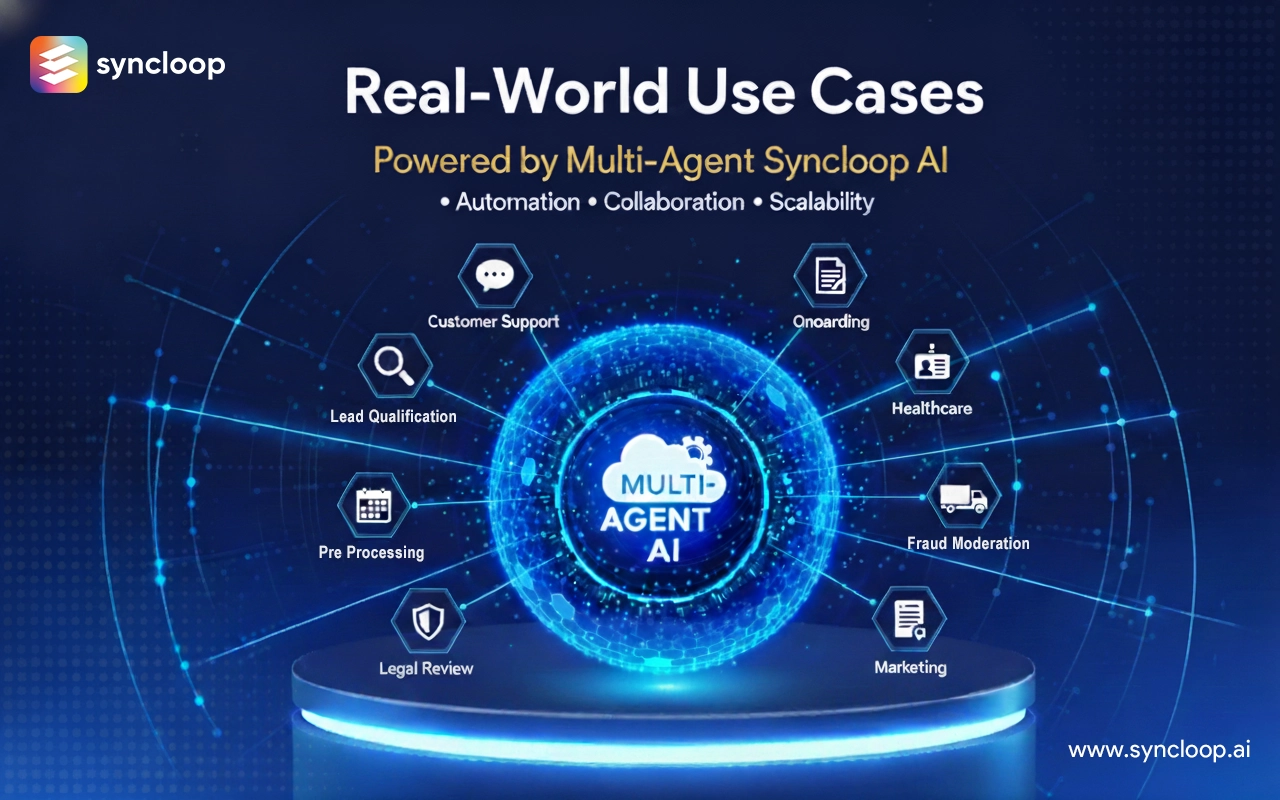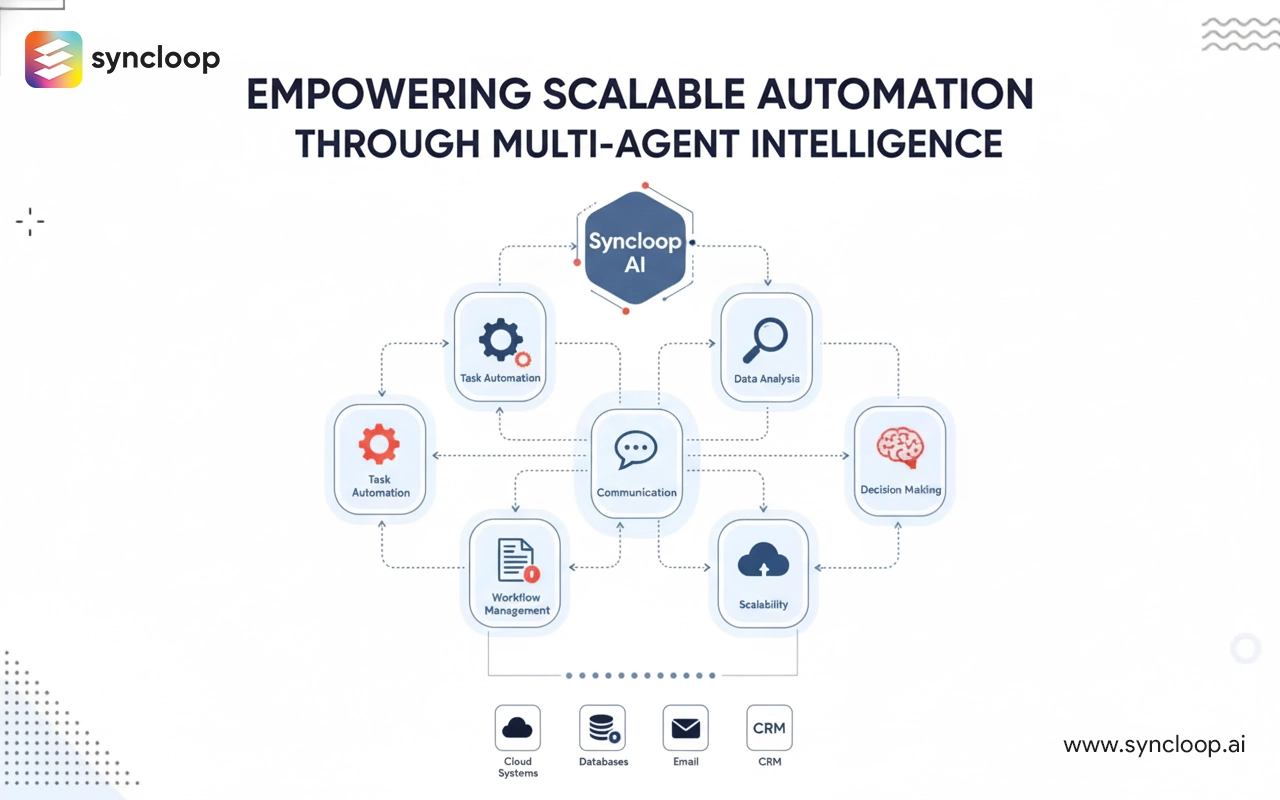From Silos to Synergy: Unlocking Multi-Agent Collaboration
with Syncloop AI
Posted by:
Donna Martin | March 15, 2025

Introduction
Modern businesses are built on systems—CRMs, ERPs, ticketing
platforms, analytics tools, cloud services, and more. But the
reality is that many of these systems don’t talk to each
other. They operate in silos, causing delays, duplicate work,
and fragmented decision-making. As companies grow, these silos
grow with them, slowing down innovation and collaboration.
To break out of this fragmented model, businesses are turning
to multi-agent AI platforms—and at the forefront of this shift
is Syncloop AI.
Syncloop AI doesn’t just automate tasks. It enables
collaborative intelligence by deploying multiple AI agents
that work together, across systems, teams, and workflows. Each
agent brings a unique function—data gathering,
decision-making, integration, or communication—and operates in
harmony with others to achieve common business outcomes.
In this blog, we’ll explore how Syncloop AI helps
organizations move from disconnected silos to unified
synergy—by unlocking the true potential of multi-agent
collaboration.
The Problem with Operational Silos
Operational silos are often unintentional. They emerge as
companies adopt new tools, grow teams, or expand into new
regions. Each team starts using platforms that best suit their
needs—but those platforms often don’t integrate smoothly with
others.
What starts as a practical solution becomes a bottleneck:
- Sales can’t see what support is doing.
- Marketing has no real-time data from product usage.
- Finance has to chase updates from every department.
- IT gets pulled into every integration issue.
This leads to slow decisions, lost productivity, and fractured
customer experiences. Automation can help—but only if it’s
built on a foundation that promotes collaboration, not more
fragmentation.
What is Multi-Agent Collaboration?
In the context of Syncloop AI, multi-agent collaboration means
having several intelligent software agents, each designed for
a specific task, working together to complete complex
workflows.
Each agent:
- Operates independently but communicates with others.
- Has access to different systems, data, and logic.
- Can make decisions based on context.
- Reacts and adapts in real time.
Instead of designing one massive workflow with rigid logic,
you deploy smaller, modular agents that handle individual
parts of the process. These agents interact through Syncloop’s
orchestration layer, creating dynamic, intelligent flows.
It’s like building a team—each member has a role, but they
collaborate toward shared goals.
How Syncloop AI Enables Seamless Agent Collaboration
Syncloop AI is built for scalability, flexibility, and
communication. Its architecture is designed to help businesses
connect workflows, systems, and AI capabilities through
autonomous, task-oriented agents.
Here’s how it enables multi-agent synergy:
-
Orchestration Engine
Syncloop manages the
coordination between agents. It ensures they execute in the
right order, respond to triggers, and handle dependencies
intelligently.
-
LLM Integration
Agents powered by large
language models (like GPT or Claude) bring contextual
understanding into workflows—enabling smart routing,
summarization, and communication across systems.
-
Event-Driven Triggers
Agents respond to
real-time events—like form submissions, API updates, or
customer actions—making workflows responsive and adaptive.
-
Data Sharing & Context Awareness
Agents
can pass data between each other, reference shared
knowledge, and maintain context throughout the workflow.
-
Visual Workflow Builder
Teams can design,
deploy, and refine multi-agent flows through a clean,
drag-and-drop interface—making collaboration accessible
beyond developers.
This combination turns Syncloop into more than just an
automation platform. It becomes a collaborative operating
system for intelligent work.
Real-World Example: From Siloed to Synchronized
Let’s imagine a typical scenario in a SaaS company: handling a
customer cancellation request.
In a siloed setup:
-
A support agent receives the request and sends it to the
success team.
- The success team checks the CRM for customer status.
-
They email finance to verify if a refund is applicable.
-
Then they loop back to the support team, who replies to the
customer.
It’s manual, slow, and full of back-and-forth.
With Syncloop AI’s multi-agent collaboration:
-
Agent 1 reads the request and extracts customer details
using an LLM.
-
Agent 2 checks CRM for subscription status and renewal
history.
-
Agent 3 confirms refund eligibility with the finance system.
-
Agent 4 prepares and sends a tailored response to the
customer.
-
Agent 5 logs the interaction and updates internal
dashboards.
All of this happens in real time—no human handoffs, no silos,
no delays.
Benefits of Multi-Agent Collaboration with Syncloop AI
Adopting a multi-agent model through Syncloop AI brings
several long-term benefits:
-
Increased Workflow Efficiency
Processes move
faster as agents work in parallel, not sequentially.
-
Greater Flexibility
Each agent is modular and
reusable—making it easy to adapt workflows without
rebuilding from scratch.
-
Enhanced Visibility
Every step is tracked.
Teams can see which agents are working, how data flows, and
where delays occur.
-
Empowered Teams
With low-code tools and
visual builders, business users can contribute to workflow
design—no need to wait on IT.
-
Improved Accuracy
Agents don’t forget steps
or make careless mistakes. Logic is followed consistently,
and data is validated along the way.
-
Scalability
As you grow, you can add new
agents for new tasks. Syncloop handles the orchestration and
communication.
In short, you get a system that works like a well-coordinated
team—only faster, smarter, and always available.
Breaking the Barriers: Collaboration Across Departments
Multi-agent collaboration doesn’t just happen inside the
software. It promotes real-world alignment across departments.
With Syncloop:
-
Sales and marketing teams can sync campaign data in
real-time.
-
Finance and operations can share reports automatically.
-
HR and IT can coordinate employee onboarding without email
chains.
-
Support and product can identify feature requests and bugs
faster.
When systems and processes talk to each other, people start
talking more too. Silos dissolve not just technologically, but
culturally.
Getting Started with Multi-Agent Syncloop AI
You don’t need to overhaul everything on day one. Syncloop
allows you to start with a simple process, deploy a few
agents, and build from there.
For example:
- Automate ticket routing with one agent.
- Add LLM-based classification with a second agent.
-
Introduce status updates and email replies with a third.
Each small win builds momentum—and before you know it, your
workflows are more intelligent, responsive, and collaborative
than ever before.
And because Syncloop’s platform is low-code, your business
teams can contribute just as much as your developers.
Conclusion
Operational silos slow down your business. They create
miscommunication, duplication, and inefficiency. But they’re
not inevitable.
With multi-agent Syncloop AI, you can move from disconnected
systems to unified, intelligent workflows that reflect how
your teams actually work—collaboratively, adaptively, and with
shared purpose.
By unlocking the power of agent collaboration, you empower
your business to move faster, work smarter, and deliver better
outcomes across every department.
From silos to synergy—that’s the promise of Syncloop AI.
Back to
Blogs







